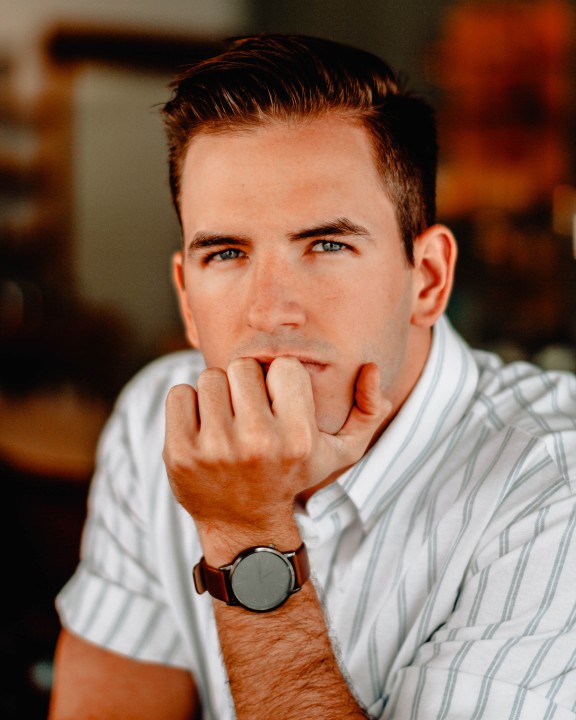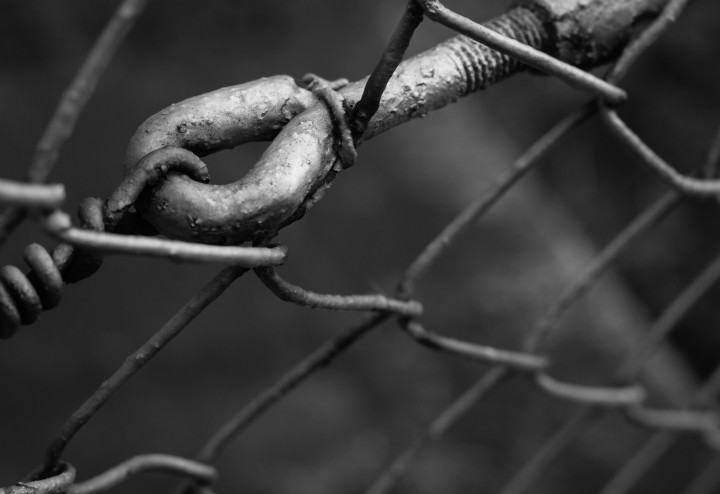Theories of Addiction: Breaking it Down

We all walk around daily with thoughts, behaviors, and conditioned routines. For many of us in society, we wake up, shower, eat, go to work, relax, and sleep. Rinse, wash, and repeat. In this daily routine, our brains function normally, and we allow thoughts to pass and behaviors and emotions to come and go without giving many of them a second thought. What about a brain that is addicted to drugs, though? How does the brain exemplify its addiction through behaviors? To understand these questions, we first have to gain a general knowledge of how the brain and drugs work and some important chemicals within it. Everyone wants a quick fix, but understanding the biology behind addiction allows us a greater depth of understanding of how recovery from addiction can be a lengthy process. How Does Addiction Affect the Different Parts of the Brain? Before we go any further, we must first look at the brain as a whole and then break it down into the parts that play an important role in executing complex tasks, sleep, memory, and emotional regulation. Pleasure & Reward Centers in the Brain Most drugs affect the dopamine pathways in the brain, specifically the mesolimbic pathway. This is what is known as the pleasure and reward center of the brain. This pathway controls an individual’s response to awards and such things as food and sex, but it also controls the response to substances people abuse. It regulates the determination and motivation to repeat a pleasurable experience by storing in memory the steps taken to achieve it. While this all might sound complicated, it isn’t. Think about a pleasurable behavior you engage in and begin to break it down from macro to micro. How do you know it’s coming? What steps do you take? Do you feel euphoric when getting closer to enjoying the experience? What is the response once the behavior is complete? The mesolimbic pathway that is working for your pleasurable experiences is the same for people who are using drugs. Where it differs for those suffering from addiction is in the behaviors leading up to and the mechanism used to get the dopamine response. Synaptic Pruning When we think about it from afar, the brain is simply the mechanism by which we learn. However, each of us learns differently and engages in different rewarding behaviors. This is because the brain is plastic throughout most of its lifespan. It adapts to learn and strengthens where information is more readily used and prunes information that is not. Synaptic pruning is what helps older people become more efficient at their jobs, helps babies navigate their sensory and motor abilities, and helps teens organize neural networks to become more processing efficient. The same process controls addiction and the course of relapse over lengthy periods of time. Neural Networks The brain is a complex system of many complex regions, all of which are constantly firing within neural networks. Neural networks contain the highway that connects the different parts of the brain together. They are highly social, and without interaction, the brain would cease to learn. Neurons and networks are strengthened by the experience of a stimulus, whether that stimulus is good or bad. Therefore, one can assume the excitation of a neuronal network isn’t always positive based on how the person is experiencing something; in this case, drugs of abuse. Someone who has experienced trauma or using drugs will have the same reinforcing neuronal excitation another person would have in a happy moment. These become integrated into the brain differently based on the experience and can even shape our future behaviors. What Does Addiction Do to the Brain? With repeated use, the brain adapts, and the neural circuitry becomes altered due to the drugs hijacking the neuron and altering the intake or reuptake of specific chemicals. This causes an abnormality of the circuity and leads to the brain now needing the substances to regulate itself because its natural state to produce certain chemicals has been overwhelmed or overridden. The brain, for being as complex as it is, struggles to differentiate between love, food, sex, and drugs. It prunes neurons and builds stronger bonds and attachment to experiences that are rewarding. When a drug is introduced to the body, the brain says this is highly rewarding and, as a result, wants more and more of it. With repeated administration, drugs have affected the brain’s natural ability to produce endogenous chemicals. This is the point when addiction begins and when many people enter treatment. They recognize that either they can no longer function in specific realms of life without utilizing an external substance or the substance they are using embeds them in a life not worth living. These realms can be occupational, emotional, and social, all of which are intertwined. Addiction is an encompassing disease in which once the drug use is terminated, the specific reasons a person picks up a drug can then begin to be processed through psychotherapy. The brain also has to rewire itself and adapt to producing endogenous chemicals on its own again. Think about when you injure yourself, and the body takes a multistep process to help heal the wounds. The same can be said for drug addiction and the brain. When drug use ceases, the brain must adapt to regain its homeostasis. This can be a lengthy process and is dependent on the user’s drug of choice and length of use. How Does Addiction Change the Chemical Makeup of the Brain? As we talked about earlier, your brain is constantly changing and evolving with every new thing you experience. In most cases, those changes and evolutions are actually a good thing. It’s what keeps us, as humans, able to adapt to new things happening both around us and around the world. Humans are constantly evolving and will continue to do so. Drugs tend to affect your brain in a negative way, especially when you have grown dependent or even addicted to them. Because
The Link Between Sexual Assault, Sexual Abuse, and Addiction

Every 68 seconds, an American is sexually assaulted. Sexual assault and alcohol or drugs often go hand-in-hand. The same is true for sexual abuse and addiction. Substances can play a role both before and after unwanted sexual activity. People involved in sexual violence or sexual aggression are often under the influence of drugs or alcohol. In the aftermath of sexual abuse or sexual assault, alcohol and drugs can be a way for victims to numb the emotional pain, shame, guilt, and fear they feel. Sexual Assault and Alcohol or Drugs According to the United States Department of Justice, sexual assault is “any type of sexual contact or behavior that occurs without the explicit consent of the recipient.” Sexual assault can be anything that forces unwanted sexual activity, which includes physical, verbal, or visual acts. In the last couple of decades, the media has shown a spotlight on sexual assault and alcohol’s role on college campuses. Around half of college sexual assaults involve alcohol or binge drinking. “Date rape drugs” like Rohypnol, GHB, and Ketamine are prevalent in sexual assault as well with over 50% of college women and 40% of college men saying their drinks were spiked by another person. College campuses aren’t the only place where sexual assault and alcohol are issues though. According to RAINN (Rape, Abuse & Incest National Network), an American is sexually assaulted every 68 seconds. Drugs or alcohol are a part of these incidents all too often. The influence of alcohol or drugs increases the likelihood of being a sexual assault perpetrator or victim. Furthermore, experiencing sexual assault is a significant risk factor for future substance abuse and addiction. There are several ways that sexual assault and alcohol and drugs are linked: In any form, sexual assault is a highly traumatic event, and it’s common to develop post-traumatic stress disorder (PTSD) afterwards. Sexual assault can have long-lasting psychological, emotional, and physical effects that cause great difficulty in everyday life. Sexual trauma affects survivors differently, but some common outcomes include: Some therapies shown to be effective in treating sexual assault and alcohol or drug abuse include: Sexual Abuse and Addiction It’s estimated that one in 13 males and one in four females are sexually abused during childhood. Being sexually abused is a childhood trauma that puts people at increased risk for substance use disorders. Sexual abuse is considered an adverse childhood experience (ACE). The more ACEs, the greater vulnerability to alcohol addiction or drug addiction. Some research has found that sexual abuse as an ACE is one of the strongest predictors of future substance abuse. People who experience child abuse of any kind, may drink alcohol or use drugs as coping mechanisms. This can be a way to self-medicate the emotions and difficulties that stem from an ACE. Common emotions and issues tied to sexual abuse and addiction include: Using substances to mask these issues can quickly lead to drug or alcohol dependence. Getting Help for Sexual Trauma and Addiction Addressing the emotions and fears stemming from sexual abuse or sexual assault is difficult but can also be relieving and empowering. To overcome the unhealthy coping skills that you’ve used as survival tools, you must explore the underlying issues that are contributing to substance abuse. You also need to develop healthy ways to cope with triggers and challenges. We can help you with this. Footprints to Recovery provides a safe, accepting space where you can feel comfortable sharing about difficult topics. You’ll develop a trusting relationship with an individual counselor and attend group therapy with peers who are addressing emotional wounds as well. Trauma-focused therapies like EMDR can help you recover from trauma without having to “relive” difficult experiences. A blend of traditional therapies and experiential approaches can ensure you’re addressing the mental, physical, and spiritual deficits from sexual abuse and addiction. Our addiction treatment programs offer several levels of care: We tailor your treatment plan to your background, preferences, and needs so your time with us is relevant and addresses any co-occurring disorders or other challenges. It’s hard to see beyond your struggles right now, but there is hope, and you can recover. Contact us today to learn how we can help. References
7 Common Myths About Addiction

There are a lot of myths about addiction. Some of these misbeliefs keep people from getting the help they need; others widen the rift between addicted people and loved ones. Still others perpetuate stigmas around addiction. Myths people believe about addiction sometimes include: #1 Quitting Drugs Is a Matter of Willpower Simply put, addiction hijacks the brain. Once you’re in active addiction, “just stopping” drugs or alcohol without treatment and drastic lifestyle changes is extremely difficult. Repeated substance abuse makes your brain think that having drugs and alcohol in your system is the new ‘normal.’ The brain and central nervous system start needing drugs or alcohol to function and produce the correct balances of chemicals. Substance abuse rewires the brain so that it sends similar messages to you about drugs and alcohol that it does food, water, connection with others, and other survival instincts. It can feel nearly impossible to resist triggers when you’re getting such strong signals to use substances. Obtaining and using drugs begins to take priority over everything else when you’ve become dependent on drugs and alcohol. #2 Addicts Must Hit Rock Bottom This common myth about addiction can be deadly. If you or a loved one waits to hit rock bottom to get help, it could be too late. It’s true that you cannot force people into treatment or do the work for them, but if they’re showing warning signs of addiction, getting help sooner rather than later can be a life-or-death situation. You don’t need to hit rock bottom to overdose, cause irreversible physical and mental health damage, or put yourself or others in danger. #3 Alcohol Addiction Is Better Than Drug Addiction Because alcohol is legal, some people view alcohol addiction as less serious than drug addiction. This is simply not true. Alcohol is one of the leading causes of preventable deaths in the United States. Alcohol contributes to several chronic conditions like: Binge drinking is also risky, accounting for almost 50% of deaths from excessive alcohol use. Furthermore, alcohol is responsible for impaired driving deaths. At least one American dies every 52 minutes from drunk driving. Alcohol withdrawal is one of the most dangerous withdrawals from substances. Alcohol withdrawal symptoms can include: The fact is that any type of substance of abuse can be dangerous. #4 Substance Abuse Isn’t Serious if You’re “Functioning” You may think if you’re able to hold a job, go to school, or manage family responsibilities, you don’t have a serious problem. However, you can be struggling with addiction while living a rather ‘normal’ or productive life. You will remain ‘functioning’ until you cannot function anymore. It’s not uncommon for core parts of your life to begin falling apart as drug or alcohol dependence and tolerance worsens. Furthermore, a functioning alcoholic or drug addicted individual is still at risk for the multitude of health problems linked to substance abuse. #5 Relapse Means You’ll Never Get Better Relapse can be frustrating and discouraging, but it’s not a failure. Addiction is a chronic disease with similar relapse rates as other chronic conditions like high blood pressure and diabetes. It’s not uncommon to relapse at least once on your recovery journey. Relapses are opportunities to learn more about yourself, your triggers, and what is critical to maintaining sobriety. Many people come out of relapses stronger and more dedicated to their recovery. #6 Drug Rehab Is a “Cure” An addiction treatment program is a necessary part of recovery for many people, but it’s not a magic pill. People enter substance abuse treatment at varying stages of readiness to change. For some, an addiction recovery program is indeed the turning point they need to take back their life. They get sober, make lifestyle changes, and put recovery skills into practice that help them refrain from drugs and alcohol indefinitely. Others might need to participate in an addiction treatment program several times throughout their recovery journey. Either way, recovery is lifelong. It’s something you must always be aware of, work on, and nurture. Whether you’re in active addiction or haven’t had a drink or drug in decades, you’re never “cured” of addiction. Relapse is always a risk, but that risk can greatly diminish the longer you’re in recovery. #7 Prescription Drugs Are Safer Than Street Drugs Some people think that because a doctor prescribed a drug, it’s not “as bad” as street drugs like heroin, crack, or cocaine. The opioid crisis has helped dispute that myth about addiction. Around 247,000 people in the U.S. died from a prescription opioid overdose from 1999 to 2019. The National Institute on Drug Abuse reports that in a period of one year, 1.5 million Americans started misusing tranquilizers, 271,000 started misusing sedatives, and over one million started misusing prescription stimulants. The truth is addiction doesn’t discriminate by type of drug and any substance that you abuse can be dangerous and deadly. Concerned About Yourself or a Loved One? Drug and alcohol addiction are serious conditions that have long-lasting effects on your physical and mental health. If you or a loved one is struggling with addiction, reach out to us for a free, confidential consultation. We provide evidence-based substance abuse treatment that helps you understand addiction and the reasons you abuse drugs and alcohol, so those can be addressed. You’ll learn healthy coping skills and develop connections with peers in recovery who know what you’re going through. References
Suicide: One of Addiction’s Hidden Risks

If you’ve ever considered suicide, you may know the first-hand struggle of feeling depressed and helpless. Similarly, if you’ve lost someone to suicide, you understand the anguish and confusion people experience when a loved one commits suicide. Suicide continues to remain an ongoing epidemic in the United States. Today, it is the tenth leading cause of death. On average, there are 132 suicides per day, and that number doesn’t account for the attempts people make. There is no doubt that suicide is a complex issue. Many factors trigger suicidal ideation, including drug use. For some people, substance abuse and suicide go hand-in-hand. What Is the Connection Between Substance Abuse and Suicide? Substance use represents a serious risk factor for suicide attempts. Compared to the general population, research shows that people struggling with addiction are 10 to 14 times more likely to die from suicide. Nearly a quarter of suicides involve alcohol intoxication, and opiates are present in 20% of suicide deaths. The reasons for committing suicide vary. Many people struggling with addiction feel immense guilt, shame, sadness, and anger towards themselves. They also often: Feel uncertain about whether they can live without substances Feel like they are doomed to make bad decisions. Self-harm Have poor impulse control Struggle with low self-esteem and self-worth Have medical, legal, or financial issues that can trigger feelings of hopelessness Deal with co-occurring mental health issues, like depression or anxiety Have unresolved trauma Struggle with impaired judgment Certain risk factors, like previous suicidal behavior or a family history of suicide, can increase someone’s likelihood of making an attempt. Research suggests 90% of people who die by suicide have one or more psychiatric disorders. The risk of suicide increases more with the presence of both a psychiatric disorder and a substance use disorder. Not everyone with addiction struggles with suicidal thoughts. But many people who struggle with suicidal thoughts have problems with drugs or alcohol. How Do You Know If Someone You Love Is at Risk of Suicide? Sometimes people with suicidal thoughts discuss their struggles openly. But it’s also very common for them to withhold their feelings. It’s important to understand the common warning signs of suicide. They include: Talking about wanting to die or kill themselves (even jokingly) Talking about feeling trapped, hopeless, or purposeless Acting increasingly anxious, agitated, or reckless Displaying irritation and rage Exhibiting extreme mood swings on a routine basis Sleeping too little or too much Using more alcohol or drugs Talking about feeling like a burden to others That said, not everyone displays these common risk factors. Unfortunately, suicide can happen without warning. Some people can be extremely guarded or secretive about their feelings. They may not want to burden others with their struggles. What Steps Should You Take If You Are Struggling? If you are struggling with suicidal thoughts, you are not alone. Even though the pain may feel unbearable, feelings pass. Things can get better. With time, support, and resources, you can find more meaning in life. Make a Safety Plan If you struggle with recurrent suicidal thoughts or depression, a safety plan can help you take care of yourself. These plans are meant to be made before you’re in an acute crisis. If you make an attempt and recover from it, a safety plan can help you if thoughts arise again. Safety plans are written plans that identify the steps you will take if you struggle with suicidal thoughts. These plans serve as excellent references for when you’re in immediate distress. A safety plan should include coping skills for how you can manage your emotions. It should also include contact information for trusted friends or family as well as a doctor or therapist. Delay the Urge Even if you’re experiencing tremendous pain, commit to distancing yourself from your intended action. For example, give yourself a week to revisit your thoughts. By refusing to take immediate action, you gain ownership over your emotions. If you are struggling with depression and/or suicidal thoughts, please know that you do not have to continue to feel this way. Hope and treatment is available. Make Your Surroundings Safe Remove any weapons, pills, knives, or razors. For your safety, please make sure they are inaccessible for the next few days. It is a good idea to give these items to someone you trust. You can also contact a loved one to remove them for you. Reach Out to Your Support Even if it doesn’t seem like anyone cares, people want to help you during this vulnerable time. Refer to your safety plan and reach out to your trusted contacts. Do it immediately, even if it feels scary or embarrassing. By sharing your feelings with someone, you’re choosing to keep fighting. Seek Addiction Treatment Drugs and alcohol can exacerbate suicidal thoughts. Professional treatment is often the first step toward recovery. Your treatment team will also provide you with support for managing difficult emotions. Call the National Suicide Prevention Hotline or 911 If you have an immediate plan to harm yourself, it’s imperative to reach out for support right away. Calling 1-800-273-8255 will connect you to trained crisis counselors via a 24/7 hotline. This support is free and confidential. You can also speak with a crisis counselor through their online chat lifeline. Additionally, you can call 911 or visit your local emergency room anytime you need to. Suicide is a serious and devastating issue. Addiction can complicate and increase suicidal behavior. At Footprints to Recovery, we can help you work through managing these challenging emotions. We believe everyone deserves the chance to heal. Contact us today to learn more about our process. References https://afsp.org/suicide-statistics/ https://psychiatryonline.org/doi/full/10.1176/appi.ajp-rj.2018.130603 https://www.hhs.gov/answers/mental-health-and-substance-abuse/does-alcohol-increase-risk-of-suicide/index.html https://save.org/about-suicide/warning-signs-risk-factors-protective-factors/ https://suicidepreventionlifeline.org/ https://www.ncbi.nlm.nih.gov/pmc/articles/PMC6165520/





